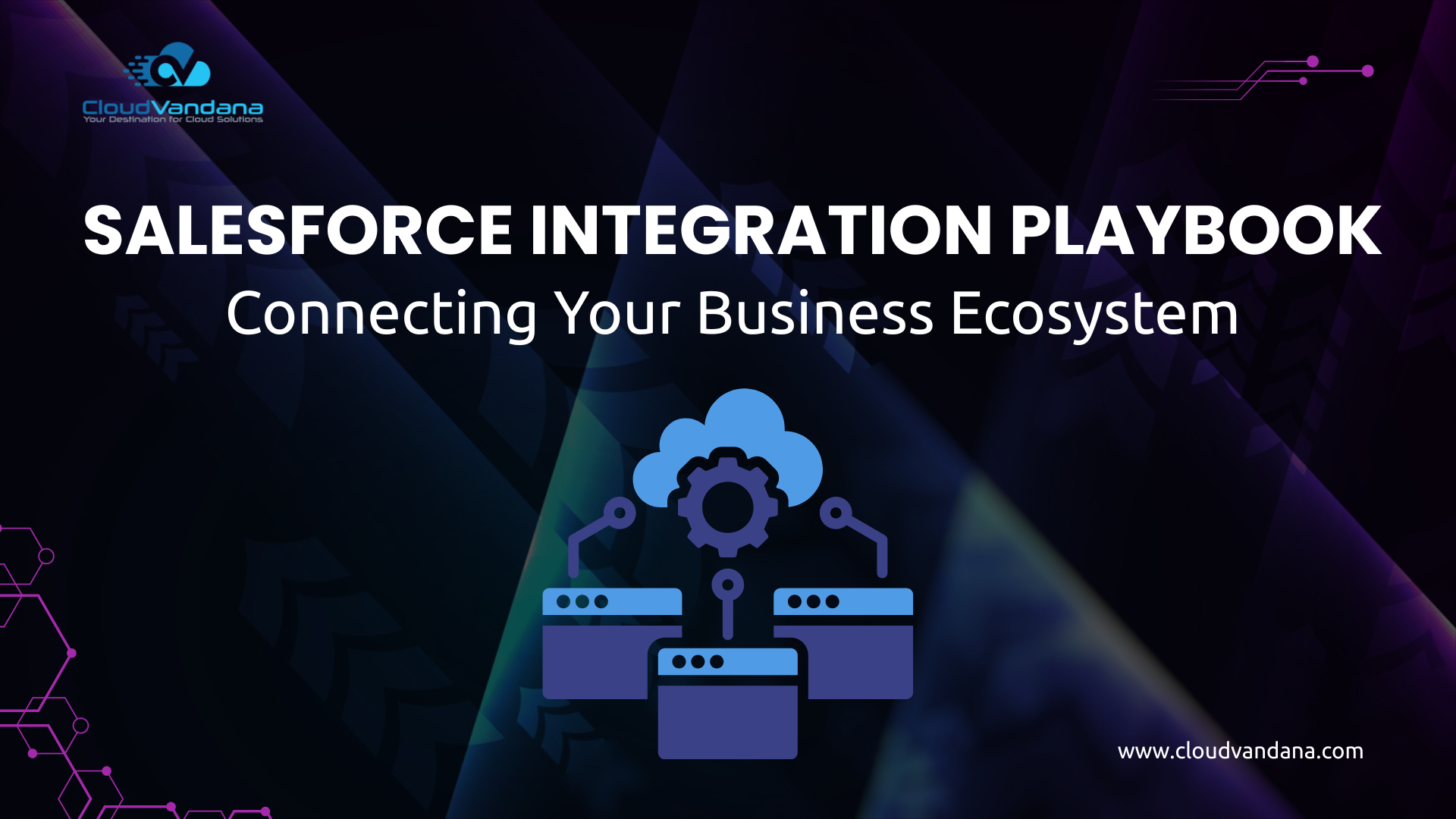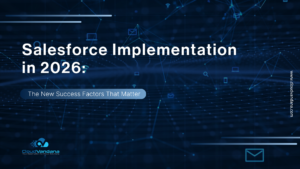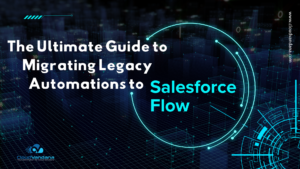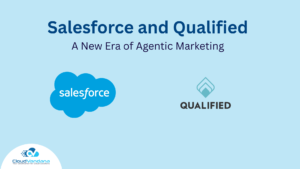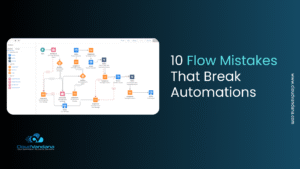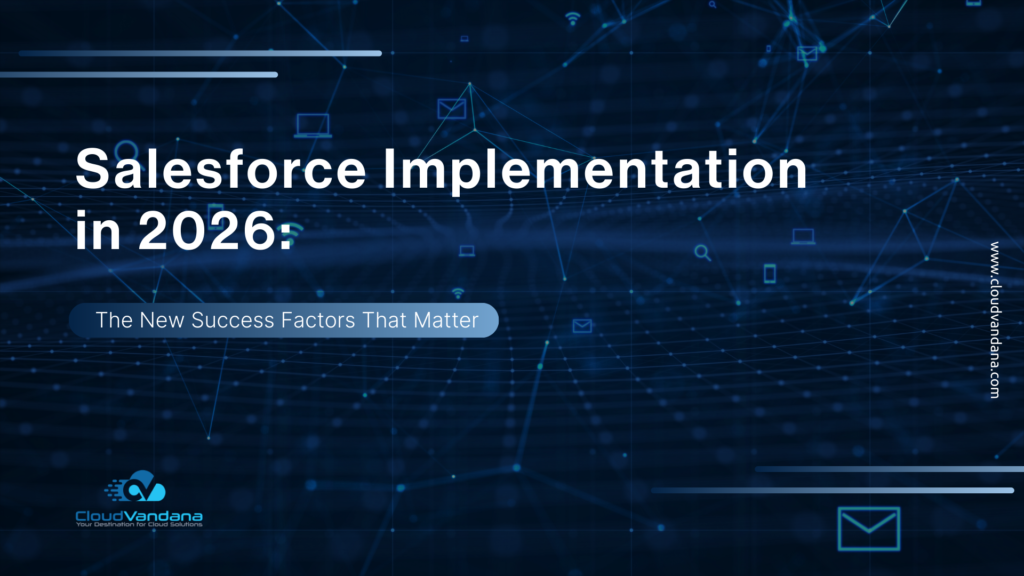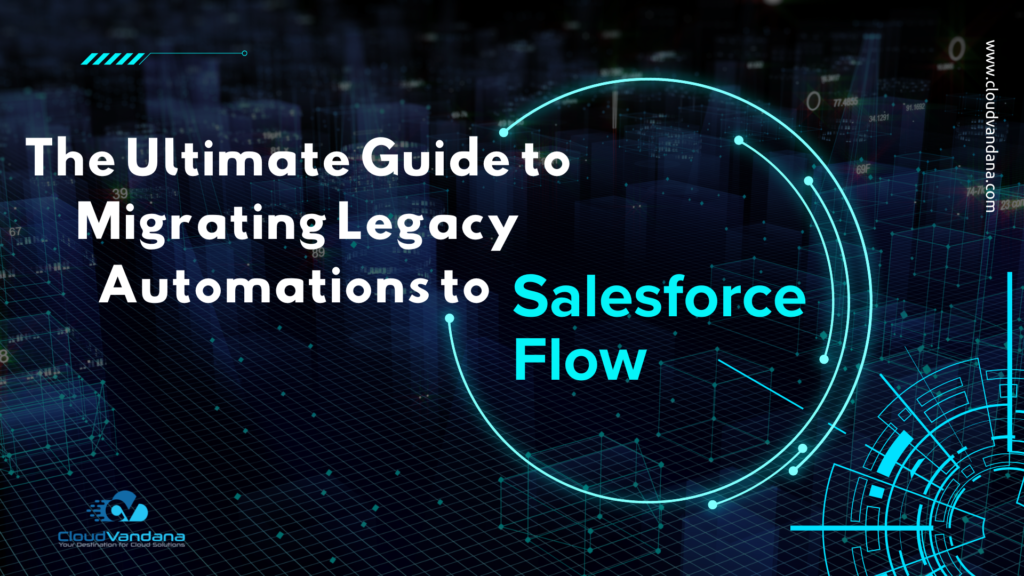Introduction: The Age of Connected Enterprises
Enterprises today thrive on connectivity. The modern economy is no longer built on isolated tools and departmental silos; it is built on ecosystems where data, processes, and teams move fluidly across digital landscapes. Customers expect seamless experiences—whether they’re buying a product, raising a support ticket, or engaging with a marketing campaign. Employees, too, demand efficiency and real-time access to the information they need.
But without integration, these expectations collapse. Systems may be best-in-class in their own right, but if they fail to communicate, value remains locked away. Integration is the glue of the digital enterprise, turning scattered parts into a cohesive whole. Salesforce, as the global leader in CRM, sits at the very heart of this new age of connectivity. Its ability to unify sales, service, marketing, and analytics makes it indispensable—but only if it is integrated intelligently with the rest of the business ecosystem.
Table of Contents
- Introduction: The Age of Connected Enterprises
- Why Integration is the Backbone of Salesforce Success
- The Fragmentation Challenge in Modern Enterprises
- Salesforce as the Nexus of Business Systems
- Core Principles of a Salesforce Integration Strategy
- Mapping the Integration Landscape
- Data Governance as the Cornerstone
- API-Led Connectivity: The Integration Standard
- Custom Integrations vs. Pre-Built Connectors
- Integration Use Cases that Deliver Immediate ROI
- Common Pitfalls in Salesforce Integrations
- Best Practices for Designing Resilient Integrations
- Security Framework for Integrations
- Measuring Integration Success
- The Human Dimension: Aligning Teams for Integration
- The Role of AI and Automation in Integration
- Future Trends in Salesforce Integrations
- Case Study: From Silos to Synergy
- Crafting Your Own Salesforce Integration Playbook
- Conclusion: Building a Borderless Business Ecosystem
- Frequently Asked Questions (FAQs)
- YOU MIGHT ALSO LIKE
Why Integration is the Backbone of Salesforce Success
Salesforce is a powerhouse platform, celebrated for its flexibility and depth across sales, service, and marketing. Yet, even with its robust capabilities, it cannot deliver the panoramic view required for bold, enterprise-level decision-making when standing alone. Imagine a sales team finalizing contracts without visibility into stock levels, inadvertently committing to delivery timelines that operations cannot fulfill. Or consider a customer service representative attempting to resolve an issue without knowledge of the client’s purchase history, prior support tickets, or billing details. These gaps do more than inconvenience—they erode customer trust, slow down response times, and create costly inefficiencies that ripple across the organization.
Integration solves this by transforming Salesforce into a true control tower. Instead of existing as a single, albeit powerful, application, Salesforce becomes the hub through which the entire enterprise communicates. Orders from ERP systems, campaigns from marketing automation platforms, financial ledgers from accounting tools, and every customer interaction converge into a unified environment. This convergence eliminates blind spots and empowers employees at every level to act with confidence, context, and speed.
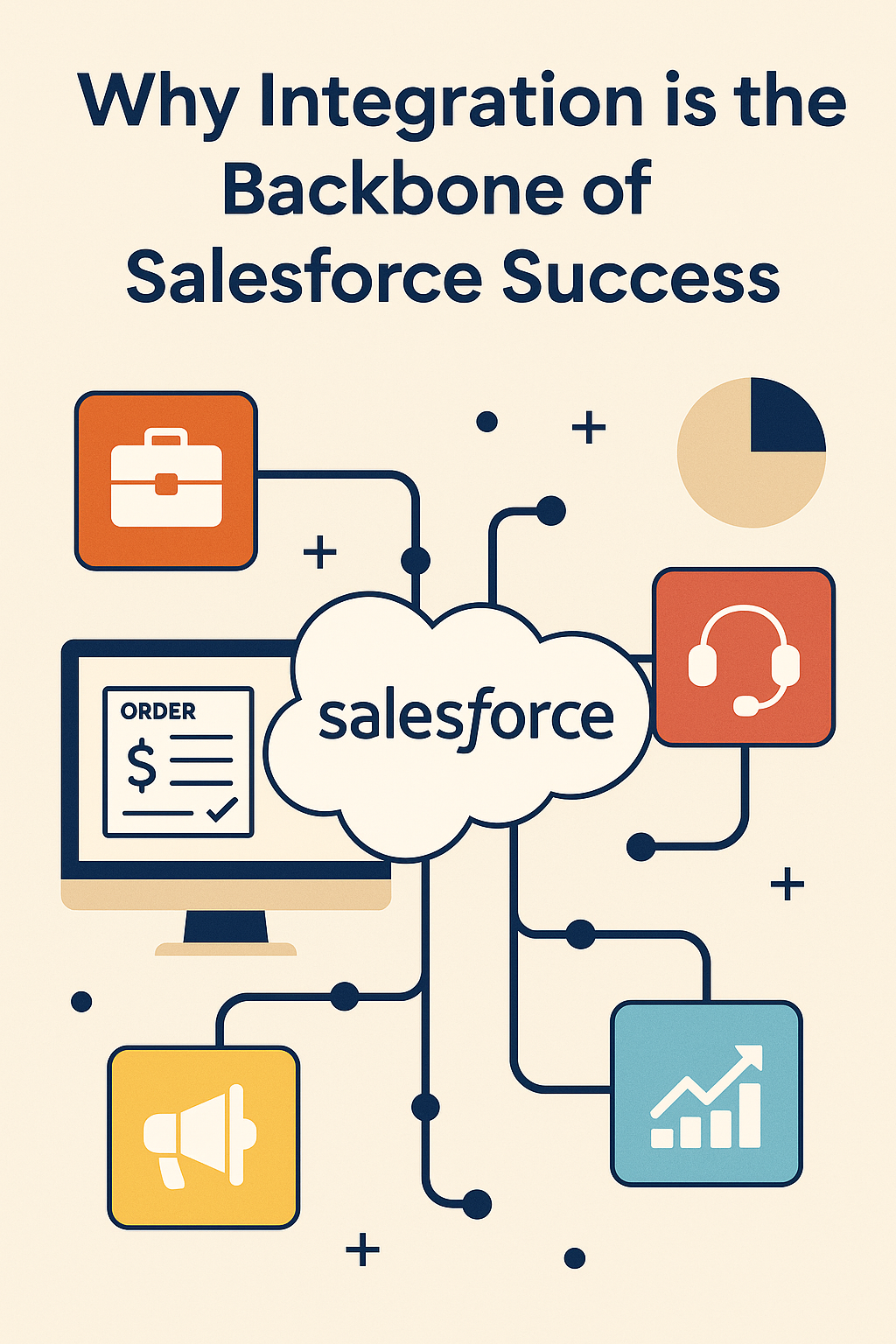
For leadership, the benefits are even more profound. Integration enriches dashboards with insights that go far beyond CRM activity. Instead of viewing sales pipelines in isolation, executives can interpret them alongside inventory availability, marketing ROI, service response times, and financial forecasts. The result is true business intelligence—decision-making powered not by fragmented data, but by a synchronized rhythm that reflects the entire ecosystem.
Ultimately, success in Salesforce is never about isolated features or standalone modules. It is about creating an interconnected landscape where information flows as effortlessly as conversation between colleagues. Integration makes Salesforce not just a tool, but the orchestrator of enterprise coherence—where data alignment drives agility, and agility becomes the foundation of sustainable growth.
The Fragmentation Challenge in Modern Enterprises
Every modern organization is powered by an intricate network of applications. Enterprise Resource Planning (ERP) systems track finances and supply chains. Marketing automation platforms orchestrate campaigns and funnel leads. Human Resource systems manage recruitment, performance, and payroll. Meanwhile, industry-specific software ensures compliance, manages logistics, or supervises production workflows. Each of these applications is designed with precision to solve specific business problems. In theory, they all add value by driving efficiency in their respective domains.
Yet in practice, this multiplicity of tools introduces layers of complexity. Each system tends to operate in isolation, storing data in its own format and guarding it within its own architecture. Instead of harmony, enterprises often find themselves dealing with discord. The promise of digital acceleration is undermined by the reality of disconnected platforms. What should be an engine of growth becomes a patchwork of inefficiencies.
The result is fragmentation—a digital Tower of Babel where systems speak in different tongues. Employees are left juggling between interfaces, manually transferring data from one application to another, or second-guessing which source contains the most accurate record. Decision-making slows down, errors creep in, and frustration grows. On the customer-facing side, the consequences are even more damaging. A service agent may promise delivery of an item that the inventory system shows as unavailable. A billing department may issue invoices for products that were already returned. These inconsistencies erode trust and create friction at every touchpoint.
Fragmentation quietly corrodes productivity, accuracy, and morale. Employees feel as though they are working harder just to stand still. Customers perceive unreliability and take their business elsewhere. Over time, what seems like a manageable inconvenience becomes a structural barrier to growth.
Integration is the antidote. By weaving together these islands of data into a single, navigable continent, integration restores order to the digital landscape. It ensures that systems not only coexist but collaborate, sharing information seamlessly so that employees and customers alike experience clarity instead of confusion. In an era where speed, accuracy, and consistency define competitive advantage, overcoming fragmentation through integration is not optional—it is existential.
Salesforce as the Nexus of Business Systems
Salesforce is far more than a CRM. It has evolved into the nexus of the enterprise, a place where data converges and decisions take shape. Marketing journeys, service escalations, partner collaborations, and commerce transactions—all can be orchestrated through Salesforce when connected to the right systems.
In this sense, Salesforce is the central nervous system of the digital enterprise. It senses signals from every part of the business, interprets them, and triggers the appropriate response. But a nervous system is only effective if its neural pathways are intact. Integration builds those pathways, ensuring Salesforce is not a solitary database but a dynamic hub where every function finds alignment.
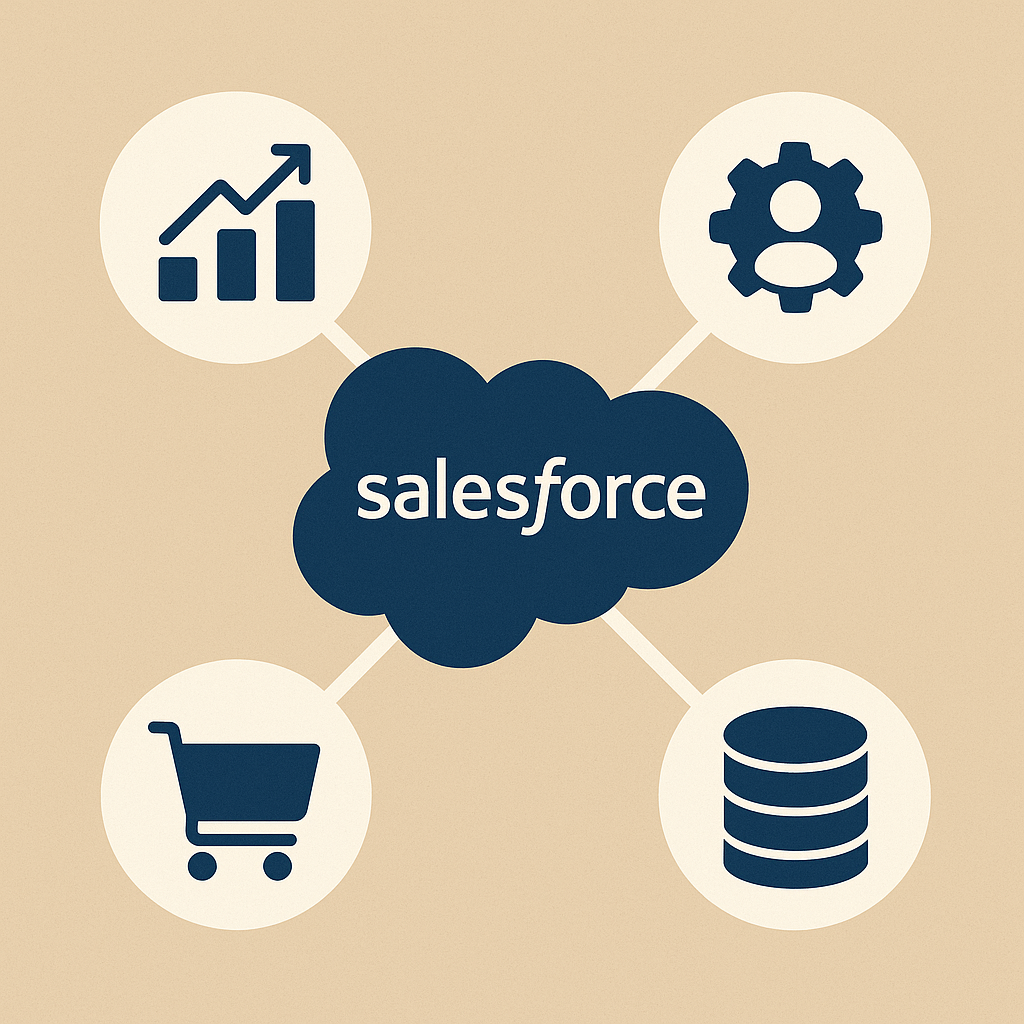
Core Principles of a Salesforce Integration Strategy
Scalability as a Non-Negotiable
An integration built only for today’s requirements is a ticking time bomb. Data volumes, user counts, and system interactions never remain static; they expand relentlessly as organizations grow, acquire customers, and diversify operations. What begins as a few thousand records quickly escalates into millions. Without scalability, integrations buckle under this pressure, creating bottlenecks that stall business progress. Scalable design ensures that as the enterprise evolves, its digital backbone evolves with it—handling complexity without compromise. It is the assurance that today’s investment will not only meet current needs but will continue to generate value long into the future.
Security as the Silent Architect
In an era dominated by cyber threats, data privacy regulations, and heightened customer awareness, security is not a feature—it is the very foundation of trust. Every integration point represents both an opportunity and a risk. Poorly secured connections become gateways for breaches, while well-designed frameworks protect sensitive information across systems. Access controls, multi-factor authentication, token management, and encrypted pathways safeguard the lifeblood of the enterprise—its data. The most effective security measures are invisible to the end user. They function silently in the background, ensuring customers experience reliability and confidence without ever glimpsing the rigor that keeps them safe.
Real-Time vs. Batch Processing
Not all processes are created equal, and neither are their integration needs. Some scenarios demand real-time responsiveness. A sales lead routed instantly to the right representative can convert a fleeting opportunity into revenue. Service teams resolving customer issues in real-time rely on up-to-the-second data. Yet, other processes thrive in batch mode. Financial reconciliations, compliance checks, or large-scale reporting may be more efficient when executed on scheduled intervals rather than continuously. The art lies in discernment—choosing immediacy where it drives business impact, and scheduling where it conserves resources. Effective integration strategies strike this balance, ensuring performance without waste.
Mapping the Integration Landscape
CRM and ERP: Bridging Operational Gaps
Salesforce excels at managing relationships, but fulfillment lives in ERP systems such as SAP, Oracle, or NetSuite. Without integration, sales teams promise deliveries inventory cannot fulfill. With it, they quote accurately, avoid backorders, and enhance customer confidence. CRM-ERP integration turns selling into a full-circle process where commitment and capability align.
Marketing Automation and Salesforce
Campaign data must flow into Salesforce to paint a true picture of customer journeys. Tools like Marketo, HubSpot, or Pardot generate engagement, but without integration, attribution remains a guessing game. Syncing ensures that every campaign touchpoint informs sales strategy, enabling precision targeting and closing the loop between marketing effort and revenue.
Service Platforms and Case Management
Customer support cannot operate in isolation. Integrating service platforms with Salesforce ensures that agents have visibility into orders, warranties, and past interactions. When customers call, service teams respond with context, empathy, and speed—qualities that build loyalty in ways no discount ever could.
Collaboration Tools and Knowledge Flow
The modern workforce thrives on collaboration tools like Slack, Microsoft Teams, or Google Workspace. Integrating these with Salesforce ensures insights travel to where work actually happens. A closed deal notification in Slack, a service escalation alert in Teams—these integrations shrink response times and embed customer intelligence directly into daily workflows.
Data Governance as the Cornerstone
Master Data Management Imperatives
Integration without governance is chaos. Master Data Management (MDM) establishes a single source of truth for key records. Whether it’s customer profiles, product catalogs, or pricing tables, MDM ensures that everyone works from the same baseline of accuracy.
Synchronization vs. Duplication
Poorly designed integrations replicate data unnecessarily, leading to multiple versions of the truth. Synchronization is about balance: each system updates when appropriate, but redundancy is avoided. This discipline keeps systems lean and prevents confusion.
Data Quality and Validation Layers
“Garbage in, garbage out” applies ruthlessly to integrations. Data validation layers cleanse and enrich information before it flows into Salesforce. Standardized formats, duplicate detection, and automated enrichment maintain quality, so that every decision is based on reliable data.
API-Led Connectivity: The Integration Standard
REST vs. SOAP in the Salesforce World
APIs are the lifeblood of integration. REST, with its simplicity and scalability, dominates modern design. SOAP, with its structure and reliability, remains vital in legacy-heavy industries. The choice is never ideological—it is practical, dictated by use case and environment.
Event-Driven Architectures
Salesforce’s Platform Events enable real-time responsiveness. Instead of waiting for scheduled updates, systems react instantly to triggers—like an order status change or a new case being opened. Event-driven designs increase agility and create ecosystems that pulse with responsiveness.
Middleware and iPaaS Platforms
Middleware tools such as MuleSoft, Dell Boomi, or Informatica serve as orchestration engines. They abstract complexity, provide reusable connectors, and enforce governance across integrations. For enterprises juggling dozens of systems, middleware is the difference between fragile connections and a resilient network.
Custom Integrations vs. Pre-Built Connectors
The Efficiency of AppExchange Solutions
Salesforce’s AppExchange has become the go-to marketplace for businesses seeking efficiency in integration. With thousands of pre-built connectors designed to integrate Salesforce with widely used systems, organizations can bypass the heavy lifting of development and implementation. These solutions not only accelerate deployment but also come with the added benefit of being tested, supported, and continuously updated by vendors who specialize in their domain. By leveraging these ready-to-use connectors, companies save valuable time, reduce technical risk, and adopt industry-standard best practices without reinventing the wheel. For many enterprises, this path offers the fastest route to ROI while maintaining stability and compliance.
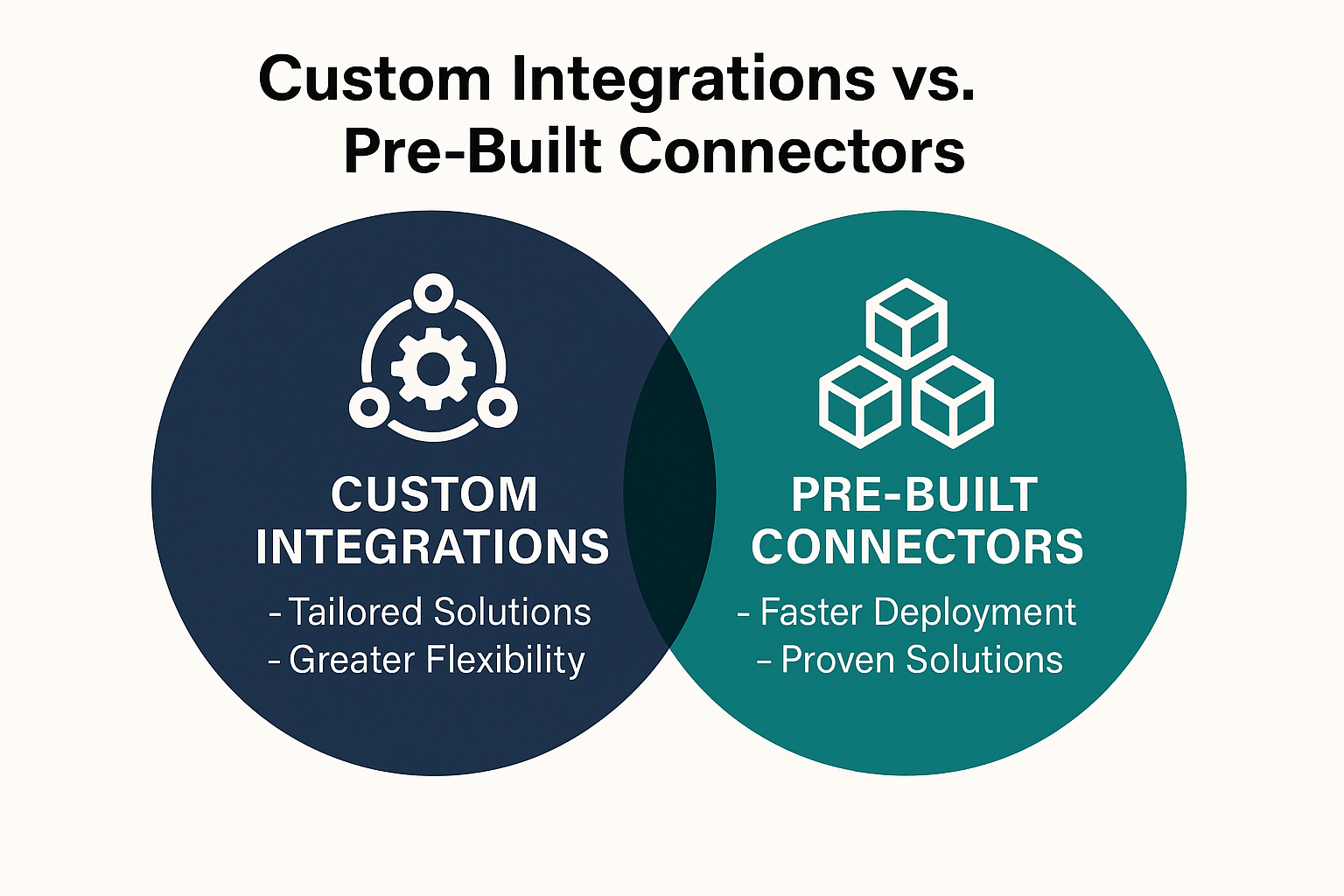
When to Build from Scratch
However, not every business challenge fits neatly into a pre-packaged solution. Certain organizations operate with unique business logic, highly specialized workflows, or niche industry applications that fall outside the scope of existing connectors. In these cases, custom integrations become the only viable option. While they require greater investment in terms of design, development, and long-term maintenance, custom-built integrations provide unmatched precision and flexibility. They allow enterprises to weave Salesforce into their ecosystem exactly as needed, ensuring that technology bends to the business—not the other way around. The trade-off is complexity, but the reward is a tailored solution that aligns perfectly with strategic objectives and long-term scalability.
Integration Use Cases that Deliver Immediate ROI
Automated Lead Routing from Marketing
Leads generated through forms, ads, or campaigns can flow directly into Salesforce, enriched with source details and routed to the right sales rep instantly. This reduces response times and dramatically increases conversion rates.
Inventory and Order Management Sync
Sales representatives armed with real-time inventory data can quote delivery dates accurately, prevent overselling, and build customer trust. Integration here eliminates the classic disconnect between sales promises and operational reality.
Customer 360 with Unified Data Views
By combining data streams from multiple sources, Salesforce becomes the lens through which the enterprise sees the whole customer. Sales, marketing, and service no longer work in silos but in harmony, delivering experiences that feel seamless and personalized.
Common Pitfalls in Salesforce Integrations
Over-Customization and Technical Debt
Excessive customization creates fragile systems. Each update or new integration threatens to break what came before. Over time, this accrues into technical debt—a hidden liability that slows innovation. Discipline in design prevents this slow erosion.
Ignoring Change Management
Even flawless integrations fail if users resist adoption. Change management—training, communication, and leadership support—is essential. Technology alone never solves problems; people must embrace it.
Poor Testing and Deployment Routines
Skipping sandbox testing or rushing deployment often leads to costly errors. Enterprises pay twice—once in firefighting, and again in reputation damage. A disciplined testing strategy is insurance against disruption.
Best Practices for Designing Resilient Integrations
Modular and Reusable Architectures
Rather than building one-off solutions, enterprises should design integrations as modular components. Reusable patterns accelerate new projects, reduce maintenance, and foster consistency.
Monitoring and Error Handling Frameworks
Integrations will fail—it is inevitable. What distinguishes resilient systems is how quickly they detect, log, and correct errors. Automated retries, dashboards, and alerting mechanisms transform failure into manageable disruption.
Sandbox Testing Environments
Salesforce provides sandboxes for a reason. They simulate production environments where new integrations can be stress-tested without jeopardizing live operations. Skipping this step is a gamble no enterprise can afford.
Security Framework for Integrations
OAuth and Token Management
Token-based authentication secures access without exposing user credentials. Proper rotation, expiration, and monitoring of tokens prevent breaches and ensure resilience.
Encryption in Transit and at Rest
Data must be encrypted not only while stored in databases but also while traveling between systems. This dual-layer approach guarantees confidentiality at all times.
Compliance with Industry Regulations
From GDPR to HIPAA to PCI-DSS, regulations demand adherence. Integration strategies must embed compliance from the outset, not as an afterthought. Non-compliance carries penalties not just in fines but in brand reputation.
Measuring Integration Success
KPIs that Matter
Success must be measured. Metrics such as error rates, synchronization lag, user adoption, and data accuracy quantify integration effectiveness. These KPIs guide optimization efforts and justify investment.
Business Impact vs. Technical Metrics
While system uptime and latency matter, they are not the ultimate measures. True success lies in whether the business grows faster, serves customers better, and reduces costs through integration. Technical health is important, but business outcomes define victory.
The Human Dimension: Aligning Teams for Integration
Collaboration Between IT and Business Units
Integration is often viewed through a purely technical lens, but in reality, it is a business transformation exercise. Systems may be linked with flawless code, yet without alignment between IT and business stakeholders, the results fall short. For integrations to deliver measurable value, IT teams must move beyond engineering efficiency and collaborate deeply with business leaders who understand the strategic vision. Together, they co-design priorities, define success criteria, and ensure that integrations serve real business objectives—streamlining processes, enhancing customer experiences, and driving growth. This partnership transforms integration from abstract technical plumbing into a deliberate enabler of organizational strategy.
Training for Continuous Adaptation
Technology never stands still, and integrations are no exception. As Salesforce evolves with new releases, and as connected systems adopt new capabilities, workflows inevitably change. Employees must be equipped to navigate this shifting environment. Ongoing training ensures teams can leverage integrations to their full potential, rather than reverting to old, inefficient habits. It empowers staff to understand not just how systems connect, but why those connections matter to business outcomes. In doing so, training nurtures a culture of agility—where the workforce adapts quickly, embraces innovation, and turns integration from a one-time project into a continuous advantage.
The Role of AI and Automation in Integration
Intelligent Data Mapping
AI reduces the burden of aligning fields across systems. It learns patterns, detects anomalies, and automates what once required painstaking manual labor.
Predictive Error Detection
Machine learning can anticipate integration failures before they occur—flagging bottlenecks, recognizing suspicious activity, or recommending preventive actions. This transforms integration management from reactive firefighting to proactive resilience.
Future Trends in Salesforce Integrations
Composable Architectures
Future enterprises will assemble integrations as Lego blocks, dynamically configuring ecosystems without coding from scratch. Composability speeds innovation and democratizes technology.
Integration of Edge Devices and IoT
From smart factories to connected vehicles, IoT devices will feed Salesforce with real-time data streams. This expands customer insights into physical experiences, merging digital intelligence with tangible operations.
AI-Powered Business Ecosystems
AI will not only move data but interpret it, recommend actions, and trigger workflows autonomously. Salesforce ecosystems will evolve into semi-autonomous networks where business agility is limited only by imagination.
Case Study: From Silos to Synergy
A global manufacturer once struggled with disconnected systems. Sales teams promised delivery dates without insight into production schedules. Marketing generated leads without knowing which channels produced real customers. Service agents resolved issues blind to product histories. The result was confusion, delays, and eroding trust.
By integrating Salesforce with SAP for ERP, Marketo for marketing, and Slack for collaboration, the organization rewired its nervous system. Sales gained instant inventory visibility. Marketing achieved accurate attribution. Service teams resolved cases with full context. The shift was dramatic: customer satisfaction soared, revenue climbed, and silos dissolved into synergy.
Crafting Your Own Salesforce Integration Playbook
Every business is unique. A retailer’s playbook differs from a manufacturer’s, which differs from a healthcare provider’s. Yet the principles remain constant: assess current systems, define integration priorities, select appropriate tools, and establish governance. The playbook is not static—it evolves with the business, guiding decisions and ensuring integrations remain aligned with strategy.
Conclusion: Building a Borderless Business Ecosystem
The future belongs to borderless enterprises—organizations that erase silos, collapse friction, and operate as unified ecosystems. Salesforce, when integrated intelligently, becomes more than software. It becomes the orchestrator of an interconnected reality where insights are instant, processes flow seamlessly, and customer relationships transcend transactions.
But success requires more than vision. It demands discipline in design, rigor in governance, and foresight in execution. Enterprises that build strong integration foundations today will lead markets tomorrow.
Ready to build your borderless business ecosystem? At CloudVandana, we help enterprises design, implement, and optimize Salesforce integrations that unlock true agility and ROI. Let’s connect your systems, empower your teams, and create a Salesforce environment that works as the heartbeat of your business. Partner with CloudVandana today and transform integration from a challenge into your greatest competitive advantage.competitive advantage, partner with CloudVandana today . Strategy, execution, and sustainable success—delivered.
Frequently Asked Questions (FAQs)
1. Why is integration important for Salesforce?
Integration ensures Salesforce does not operate in isolation. It connects Salesforce with ERP, marketing, finance, and service systems, allowing businesses to achieve a 360-degree view of customers and streamline processes across departments.
2. What are the most common systems integrated with Salesforce?
Typical integrations include ERP systems (SAP, Oracle, NetSuite), marketing automation tools (Marketo, HubSpot, Pardot), collaboration platforms (Slack, Teams), e-commerce solutions, and custom industry-specific applications.
3. Should I use pre-built connectors or custom integrations?
Pre-built connectors are faster and cost-effective, especially for widely used platforms. Custom integrations are better for unique business logic or niche workflows. Often, businesses use a mix of both depending on needs.
4. What role do APIs play in Salesforce integrations?
APIs are the backbone of integration. Salesforce supports REST, SOAP, and Bulk APIs, enabling data exchange, process automation, and event-driven workflows between Salesforce and external systems.
5. How do I ensure data accuracy across integrated systems?
Strong data governance, master data management, validation rules, and synchronization strategies prevent duplicates, errors, and inconsistencies across platforms.
6. What security measures are critical in integrations?
OAuth authentication, token lifecycle management, encryption (in transit and at rest), and role-based access controls ensure secure data flow and compliance with regulations like GDPR or HIPAA.
7. Do all integrations need to be real-time?
No. Real-time integration is critical for processes like lead routing or service case updates. Batch processing works better for scheduled tasks like financial reconciliations or nightly reporting.
8. How do I measure the success of an integration?
Key performance indicators (KPIs) include data accuracy, system uptime, synchronization speed, user adoption rates, and the overall impact on revenue growth, cost reduction, or customer satisfaction.
9. What are common mistakes in Salesforce integrations?
Frequent pitfalls include over-customization, lack of change management, inadequate testing, ignoring scalability, and neglecting data governance.
10. Can integrations break during Salesforce updates?
Yes, if they are poorly designed. Using modular architectures, versioning APIs, and testing in sandboxes before deploying to production ensures stability during Salesforce’s triannual releases.
11. How do iPaaS or middleware platforms help with integration?
Integration Platform as a Service (iPaaS) solutions like MuleSoft, Dell Boomi, or Informatica simplify connections, provide pre-built templates, handle orchestration, and offer monitoring frameworks—reducing the burden on in-house IT teams.
12. How can smaller businesses approach Salesforce integration cost-effectively?
Smaller organizations can start with AppExchange connectors for essential systems, adopt phased rollouts, and scale up as requirements grow. Careful prioritization ensures they achieve impact without over-investing upfront.

Atul Gupta is CloudVandana’s founder and an 8X Salesforce Certified Professional who works with globally situated businesses to create Custom Salesforce Solutions.
Atul Gupta, a dynamic leader, directs CloudVandana’s Implementation Team, Analytics, and IT functions, ensuring seamless operations and innovative solutions.



